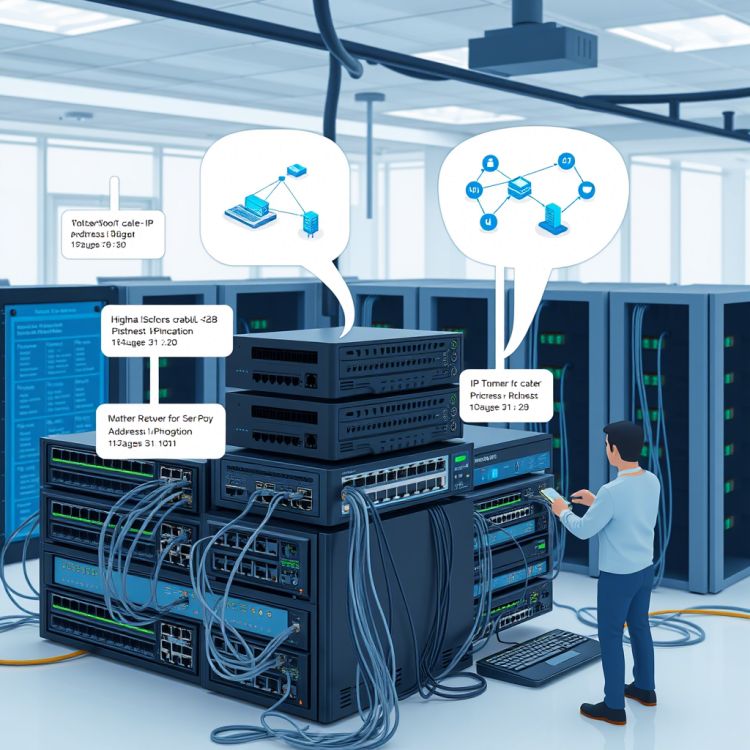Course Title : Introduction to Computer Networking
Course Description :
This course provides an introduction to the fundamental concepts of computer networking. Students will learn about the architecture, protocols, and technologies that enable communication between devices in a network. The course covers the OSI and TCP/IP models, network design, routing, switching, and basic network security.
Course Objectives :
By the end of this course, students should be able to:
- Understand the fundamental principles of computer networking.
- Describe the layers of the OSI and TCP/IP models and their functions.
- Configure and troubleshoot basic network devices (routers, switches).
- Analyze network traffic using tools like Wireshark.
- Understand the basics of IP addressing, subnetting, and routing.
- Implement basic network security measures.
Course Outline :
Week 1: Introduction to Networking
- Overview of computer networks
- Types of networks: LAN, WAN, MAN, PAN
- Network topologies: Star, Bus, Ring, Mesh
- Client-server vs. peer-to-peer architectures
Week 2: Network Models
- OSI Model: Layers and Functions
- TCP/IP Model: Layers and Functions
- Comparison between OSI and TCP/IP models
- Encapsulation and Decapsulation
Week 3: Physical Layer & Data Link Layer
- Physical layer: Cables, connectors, and signals
- Ethernet standards (10BASE-T, 100BASE-TX, Gigabit Ethernet)
- MAC addresses and frame structure
- Error detection and correction techniques (CRC, parity)
Week 4: Network Layer
- IP addressing: IPv4 and IPv6
- Subnetting and CIDR notation
- Routing fundamentals
- ARP (Address Resolution Protocol) and ICMP (Internet Control Message Protocol)
Week 5: Transport Layer
- TCP vs. UDP: Connection-oriented vs. connectionless protocols
- Ports and sockets
- Flow control and congestion control
- Three-way handshake and connection termination
Week 6: Application Layer
- Common application protocols: HTTP, FTP, SMTP, DNS
- Web services and APIs
- Email protocols: IMAP, POP3, SMTP
- Domain Name System (DNS) and its role in networking
Week 7: Network Devices
- Routers, switches, and hubs
- VLANs (Virtual Local Area Networks)
- NAT (Network Address Translation)
- Firewalls and their role in network security
Week 8: Wireless Networking
- Wireless standards: Wi-Fi (802.11a/b/g/n/ac/ax)
- Wireless security: WEP, WPA, WPA2, WPA3
- Bluetooth and other wireless technologies
- Mobile networks: 4G, 5G
Week 9: Network Security
- Common network attacks: DDoS, Man-in-the-Middle, Phishing
- Encryption and secure communication: SSL/TLS
- Authentication and access control
- Intrusion Detection Systems (IDS) and Intrusion Prevention Systems (IPS)
Week 10: Network Management & Troubleshooting
- Network monitoring tools: Wireshark, Ping, Traceroute
- SNMP (Simple Network Management Protocol)
- Network performance metrics: Latency, Bandwidth, Throughput
- Troubleshooting common network issues
Week 11: Cloud Networking & Virtualization
- Cloud computing and networking
- Virtual Private Networks (VPNs)
- Software-Defined Networking (SDN)
- Network Function Virtualization (NFV)
Week 12: Emerging Trends in Networking
- Internet of Things (IoT) and its impact on networking
- Edge computing and fog computing
- 5G and beyond
- Future trends in network architecture
Assessment & Grading :
- Quizzes : 20%
- Lab Assignments : 30%
- Midterm Exam : 20%
- Final Project : 20%
- Class Participation : 10%
Lab Assignments :
- Lab 1 : Configuring a basic network using routers and switches.
- Lab 2 : Subnetting and IP addressing exercises.
- Lab 3 : Packet capture and analysis using Wireshark.
- Lab 4 : Setting up a wireless network and securing it with WPA2.
- Lab 5 : Simulating a DDoS attack and implementing basic mitigation techniques.
